「串聯OLED」被蘋果帶火了,比OLED強在哪裡?
- 王林原創
- 2024-08-19 04:42:02714瀏覽
Although Apple has been criticized for lack of innovation in recent years, Apple has not always stood still. At least in terms of hardware design, with the support of the high unit prices of Apple products, its engineers can easily try some new technologies without having to consider too much cost issues.
For example, iPad Pro, as Apple's favorite "display technology" test field, iPad Pro has been at the forefront of display technology for portable smart devices from miniLED in 2021 to tandem OLED in 2024. Although the iPad Pro is not the first portable smart device equipped with a miniLED screen (MSI released a miniLED laptop a year earlier than Apple), when you compare the parameters of the two, you will quickly realize that they are not products of the same level.
However, there are not many display technologies that can be "converted" from the iPad Pro. At least miniLED has been abandoned by Apple. It generates too much heat and still cannot be called perfect halo control. In addition, it is too high The manufacturing costs eventually led Apple to give up its plan to promote this technology to MacBook, iMac and other platforms.
The new generation of tandem OLED technology is Apple’s latest choice. This is a display panel made by superimposing two layers of OLED panels. Compared with traditional OLED panels, it has significant improvements in many aspects. . This technology has quickly attracted market attention since the release of iPad Pro. It is reported that many mobile phone manufacturers are in contact with screen manufacturers, prompting screen manufacturers to accelerate their mass production plans for series OLEDs.
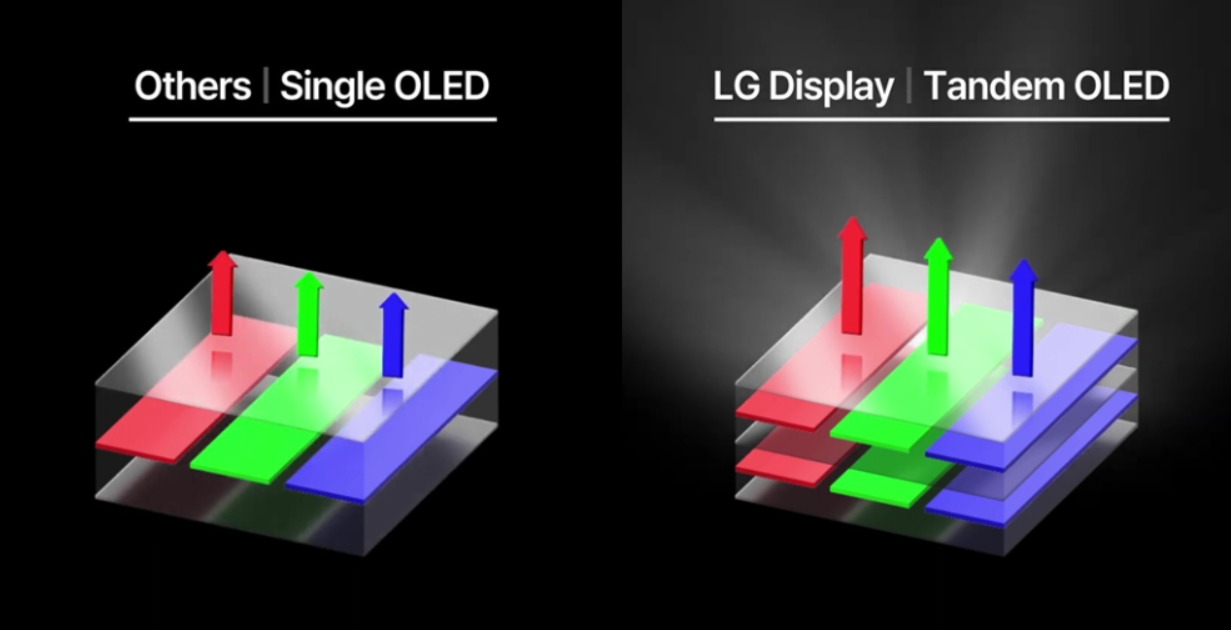
Source: aibangled
Why are tandem OLEDs more popular than miniLEDs? What devices will we see this new technology on next?
Tandem OLED, or the best choice for mobile devices
What are the advantages of tandem OLED? To put it simply, compared with traditional OLED panels, tandem OLEDs have higher brightness and longer service life, and their thickness and weight are reduced, making them more suitable for portable mobile devices.
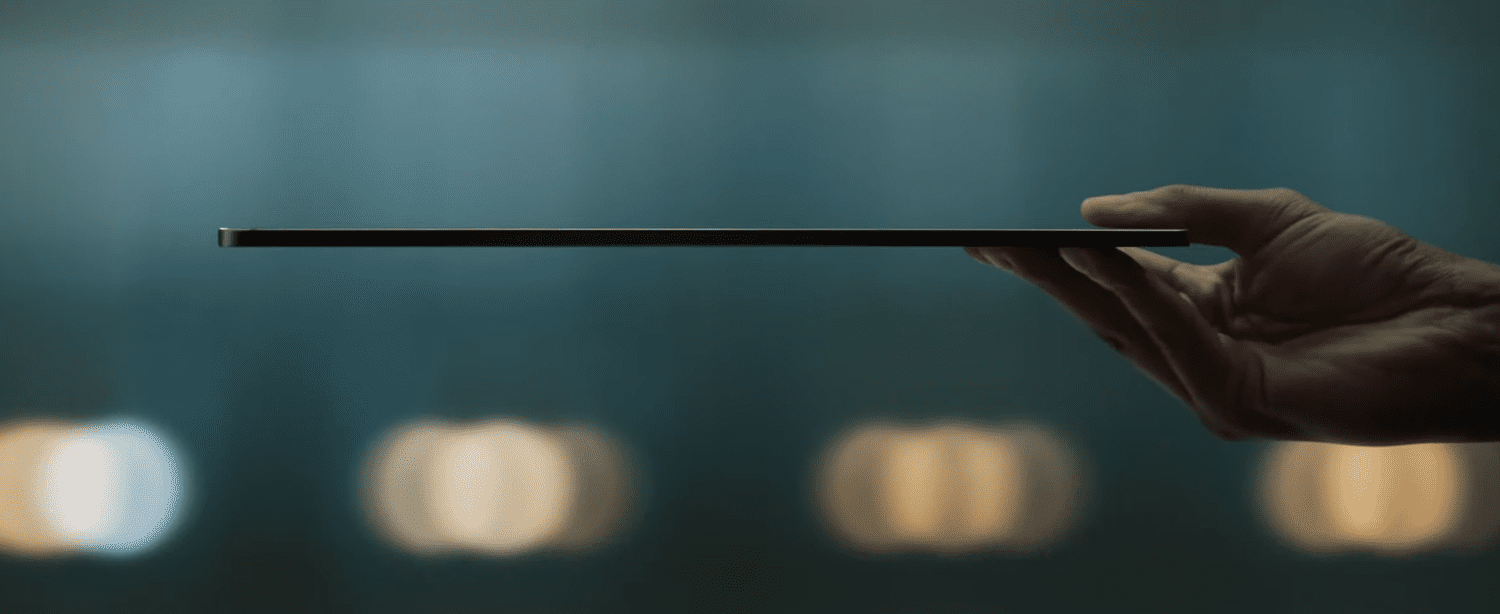
Source: Apple
Seeing this, you may have a doubt, why is a double-layer OLED panel lighter than a single-layer OLED panel? The reason is not complicated. Compared with traditional OLED panels, series OLED panels achieve high brightness by superimposing light-emitting layers, allowing the driving components and power supply circuits to be simplified during the design process, and some optical components used to increase brightness can be deleted. .
In addition, the power consumption of series OLED is actually lower than that of traditional OLED, which also allows engineers to further reduce the thickness and weight of the heat dissipation module. Are double-layer OLEDs more energy efficient than single-layer OLEDs? Although it seems a bit counterintuitive, it is true. Double-layer OLEDs are combined with special stacking technology. When displaying content with the same brightness, double-layer OLEDs have higher efficiency, which significantly reduces power consumption.
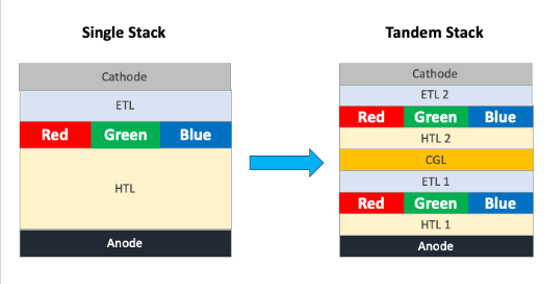
Source: MDPI
Let us briefly summarize the advantages of tandem OLED: high brightness, long life, low power consumption, low weight, almost everything needed for portable devices Advantages: Apple’s choice to abandon miniLED and switch to tandem OLED is indeed a wise choice.
And in theory, series OLEDs can continue to be superimposed. At the SID 2024 (International Display Exhibition) that ended some time ago, Hehui Optoelectronics demonstrated an OLED display panel manufactured with three layers of OLEDs in series. The brightness is as high as 6,000 nits, and it has a service life of more than 4 times that of traditional OELD screens, and the power consumption is reduced by 30% at the same brightness.
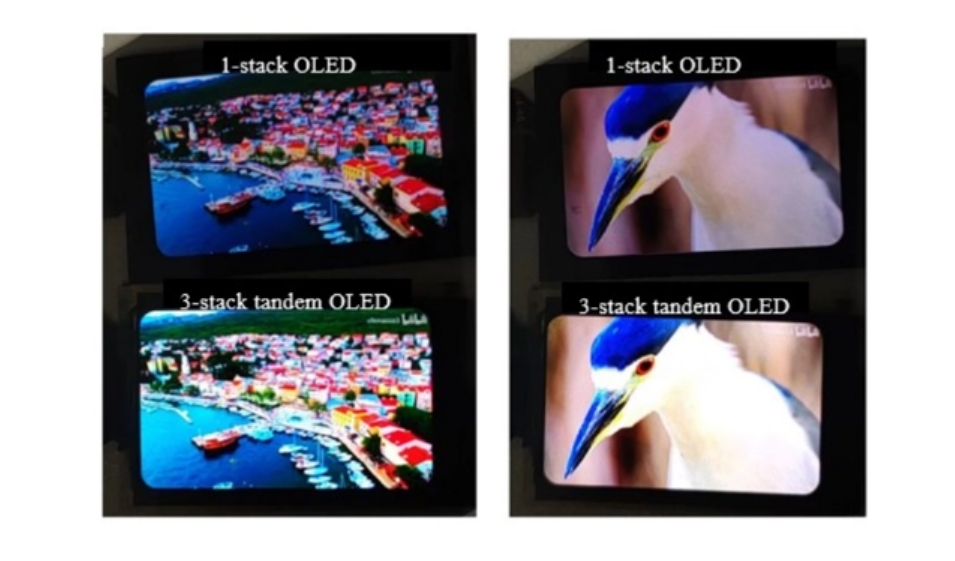
Source: Hehui Optoelectronics
So is it possible to achieve four or even more layers of stacking? It is feasible in theory, but in actual production, the more layers are stacked, the lower the yield rate, and the corresponding production cost will increase significantly. Considering the balance between cost and yield, double-layer OLED will be the best choice for some time in the future.
So there are no disadvantages to series OLED? Obviously not. The biggest disadvantage of this thing is that it is expensive. For a simple comparison, the 2022 iPad Pro with miniLED, the 256GB version is priced at 10,999 yuan, while the 2024 iPad Pro with tandem OLED is priced at 11,499 yuan, and the cost is even Higher than Apple’s customized miniLED screen.
It seems that the price has only increased by 500 yuan, but considering the impact of Apple’s adjustment of starting memory and other factors, it actually spreads the cost of the screen to the hardware premium of other parts to maintain the overall iPad Pro The pricing will not exceed the user's affordability.
根據外媒TechRadar的通報,iPad Pro的串聯OLED成本在270美元-350美元(11吋-12.9吋),而傳統OLED面板的成本僅為100-150美元。即使將iPad Pro的尺寸更大等因素考慮進去,手機尺寸的串聯OLED面板成本預估也在200美元以上。
當然成本問題並非無解,目前京東方、三星、LG等多家廠商都在著手擴大串聯OLED產線的產量,加速量產計畫。其中LG近期更是宣布,已經成功完成了筆記型電腦等級的串聯OLED量產,成功點亮便攜設備的最後一塊版圖。
串聯OLED能否普及,成本很關鍵
串聯OLED的優勢這麼多,那麼是否會取代目前的所有OLED面板呢?雖然理想很美好,但是現實卻很骨感,隨著面板面積增加,串聯OLED良率會大幅下滑。
試想一下,串聯OLED的實現前提是上下兩層OLED的每顆光珠都精準對齊,即使是1920*1200的10英寸面板,對應的OLED燈珠數量也將高達2304000個。隨著尺寸及解析度的提升,燈珠數量將達到一個恐怖的量級,對應的產品良率可想而知。
所以,目前也僅有三星和LG開始對外批量供應平板電腦級別的串聯OLED面板,國產的京東方K2串聯OLED面板,目前還僅在手機上得到商用。此外,LG還更進一步點亮了筆記型電腦的面板尺寸,但再想往上擴展到桌上型顯示器,恐怕就力有不抓了。
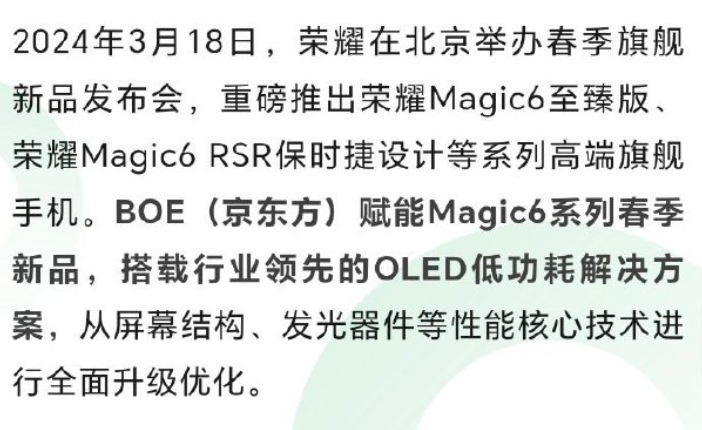
圖來源:京東方
雖然砸錢是可以解決的,但是顯示器市場的份額遠不如手機和筆記型電腦,而且桌面用戶對重量端用戶對功率端等參數也並不敏感。雖然串聯OLED的亮度表現出眾,但在桌面端有更多低成本的方法來實現亮度增強,串聯OLED並非唯一選項。
至於更高一層的電視市場,串聯OLED更是毫無性價比可言,先不提miniled技術目前在電視領域已經十分成熟,可以輕鬆實現數千分區+數千亮度的極高參數。即使是比較OLED電視本身,串聯OLED也沒有太大優勢,大尺寸的OLED電視同樣可以透過多種技術提昇亮度和壽命,實際效果並不會比串聯OLED差多少,而成本卻低得多。
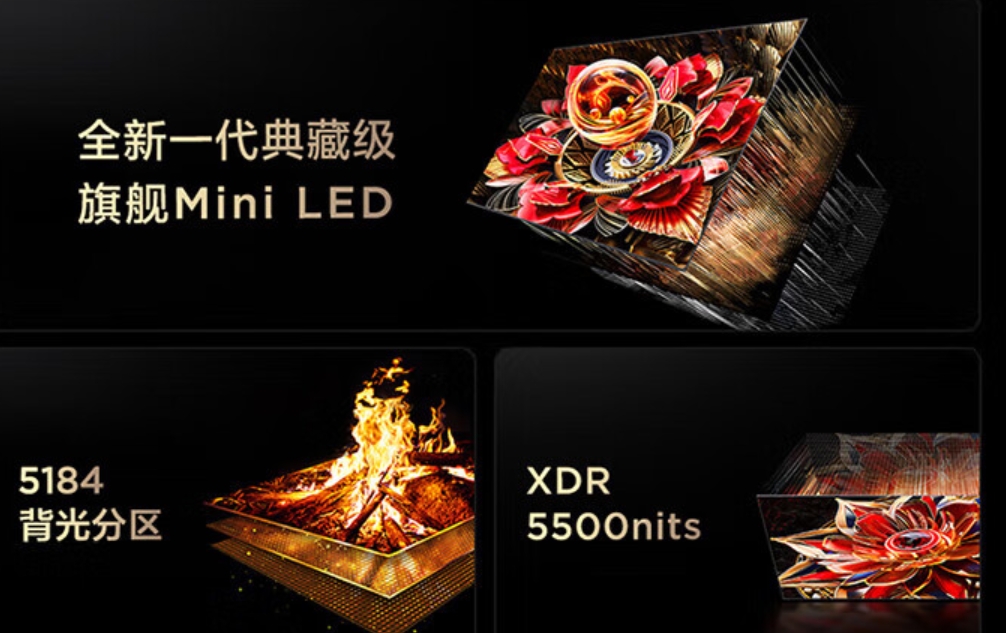
圖源:TCL
況且,電視市場還有microLED在虎視眈闊,雖然同樣microLED的售價高得驚人,隨著廣泛生產的大量成本的市場前景。
基本上可以確定,串聯OLED在未來一兩年裡,大概率只會在行動裝置上使用,而且還是會率先在手機上普及,有著榮耀Magic6 RSR的珠玉在前,想必小米、OPPO 、vivo等廠商的跟進速度應該不會慢多少。
個人猜測,2025年應該就能看到更多採用串聯OLED面板的旗艦手機面世,而蘋果也有可能會在iPhone 17或者18上,考慮採用串聯OLED屏幕。實際上,隨著處理器性能的增加,即使有更先進的製程工藝支持,手機也在面臨更為嚴苛的續航考驗,這也在迫使手機廠商尋找更低功耗的顯示面板,而串聯OLED恰恰滿足這個需求。
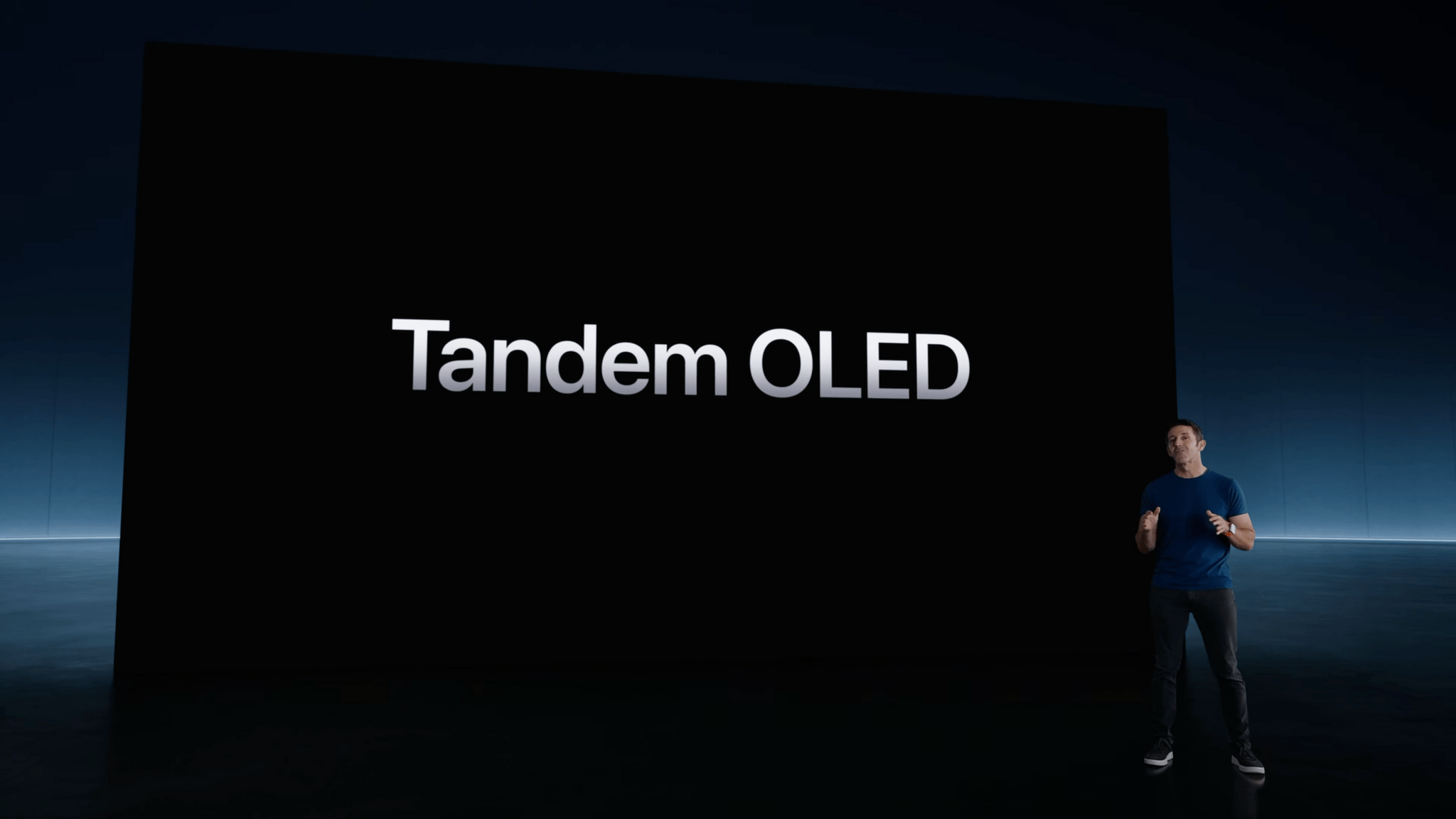
圖源:蘋果
而且,串聯OLED除了成本較高外,優勢高實在是太多了,省電、輕薄
而且,串聯OLED除了成本較高外,優勢高實在是太多了,省電、輕薄設備而言,無疑是更好的選擇。至於成本問題,前面我說過,這並非無法解決的,三星、LG和京東方都已經實現手機尺寸的串聯OLED面板量產,後續華星光電等廠商也進入戰場的話,估計成本很快就會跌到大家可以承受的區間。
寫在最後
雖然串聯OLED的前景看起來十分不錯,但是歸根結底,依然是下一代顯示技術成熟前的過渡而已。
如今顯示廠商依然在努力攻破microLED的量產問題,集高亮度、長壽命、低功耗、廣色域、超輕薄等一眾優勢於一身的microLED,可以適配從智慧手錶到超大尺寸電視的各種顯示設備。

除了顯示參數驚人外,microLED還可以根據需要,列印不同尺寸、形狀的面板,並且具有柔性OLED的可折疊特性,這使得如今只存在於PPT和實驗室的一些產品方案都會有量產的機會。
不過microLED的量產還有待時日,至少在未來的幾年時間裡,串聯OLED大概率是行動裝置最好的選擇。
封面來源:蘋果

以上是「串聯OLED」被蘋果帶火了,比OLED強在哪裡?的詳細內容。更多資訊請關注PHP中文網其他相關文章!

